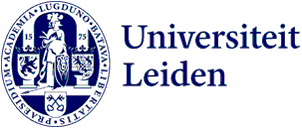
An archaeological perspective on South Holland and its Water Past and Present
Four students of the Faculty of Archaeology investigated how the current and past inhabitants of the Dutch province of South Holland deal with water. Their findings now feature in an exhibition that can now be visited in the Van Steenis building’s Reuvenshal.
Shaped by water
Water is a necessity of life, a source of food, a route to other regions, a threat, an opportunity. Especially in the western part of the Netherlands, water plays an all-important role. South Holland has been shaped largely by water. Early inhabitants learned to live with and next to the water, whereas later generations managed to mould it to their needs. But they too must always take into account the will of the water. Man could not take water for granted 6,000 years ago, nor can they today.
Dealing with water
Four students of the Faculty of Archaeology from The Netherlands, Italy and the United States have studied how inhabitants used to deal with their water at a number of places in South Holland. They concentrated on the hydrological, economic and strategic aspects of water, although there are, of course, many more to consider.

Stakeholder communication
Jolien Akman, one of the students involved, is enthusiastic about the project. ‘This internship not only provided valuable learning experiences but also allowed us to explore diverse fields such as stakeholder communication, planning and capturing compelling footage to enhance the content. Our interaction with various professionals, including archaeologists and policymakers, provided us with unique insights into their knowledge, stories and perspectives on the remarkable watery heritage of their region.’
Complicated process
Likewise, fellow student Grace Alonzo looks back at the internship favourably. ‘I had a lot of fun getting to travel to many parts of the Netherlands and speaking with local archeologists of those areas. I definitely learned how to adapt when things don't go according to plan, and I realised how much effort can go into making a rather short video. It is a long and sometimes complicated process, but it is very satisfying to see the results.’
Diversity and richness of heritage
‘Witnessing the immense diversity and richness of heritage in the Netherlands,’ Jolien adds, ‘despite its small size, was truly captivating. Working collaboratively, independently, and creatively on this project was a priceless experience. Alongside gaining new skills and expanding my understanding of Dutch history, I found immense enjoyment in the varied nature of our work. One day, we would be perched atop a clocktower in Valkenburg, interviewing the local archaeologist, and the next day we would be strolling along the beaches of Katwijk, engaging with ordinary people for interviews.’
